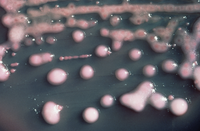
Heavy metal content in the green fodder of field pea/oat mixtures destined for cattle feed
Sign Up to like & getrecommendations! Published in 2019 at "Environmental Monitoring and Assessment"
DOI: 10.1007/s10661-019-7874-5
Abstract: The objective of the study was to establish the effect of component share in mixtures and harvest date on concentrations of selected heavy metals in the green fodder of field pea, oat, and their mixtures.… read more here.
Keywords: field; field pea; green fodder; pea oat ... See more keywords

Population structure and association mapping of traits related to reproductive development in field pea
Sign Up to like & getrecommendations! Published in 2017 at "Euphytica"
DOI: 10.1007/s10681-017-2006-1
Abstract: Field pea (Pisum sativum) is an important pulse crop globally for human consumption and livestock feed. A panel of 92 diverse pea cultivars was evaluated across nine environments and genotyped using 1536 single nucleotide polymorphisms… read more here.
Keywords: field pea; reproductive development; development; population structure ... See more keywords

Exogenous silicon and salicylic acid applications improve tolerance to boron toxicity in field pea cultivars by intensifying antioxidant defence systems.
Sign Up to like & getrecommendations! Published in 2020 at "Ecotoxicology and environmental safety"
DOI: 10.1016/j.ecoenv.2020.110778
Abstract: Field peas (Pisum sativum L.) are widely cultivated throughout the world as a cool season grain and forage crop. Boron (B) toxicity is caused by high B concentration in the soil or irrigation water, and… read more here.
Keywords: plant; tolerance; field; toxicity ... See more keywords

Understanding the multi-scale structural changes in starch and its physicochemical properties during the processing of chickpea, navy bean, and yellow field pea seeds.
Sign Up to like & getrecommendations! Published in 2019 at "Food chemistry"
DOI: 10.1016/j.foodchem.2019.03.093
Abstract: This study aimed to isolate starch from three types of untreated and autoclaved pulse seeds including chickpea, navy bean, and yellow field pea and to characterize their multi-scale structure and the associated physicochemical properties. Autoclaving… read more here.
Keywords: navy bean; yellow field; chickpea navy; bean yellow ... See more keywords

Field Pea and Lentil Tolerance to Interrow Cultivation
Sign Up to like & getrecommendations! Published in 2018 at "Weed Technology"
DOI: 10.1017/wet.2017.90
Abstract: Abstract Interrow cultivation is a selective, in-crop mechanical weed control tool that has the potential to control weeds later in the growing season with less crop damage compared with other incrop mechanical weed control tools.… read more here.
Keywords: field; cultivation; field pea; interrow cultivation ... See more keywords

Detection and qPCR quantification of seven Fusarium species associated with the root rot complex in field pea
Sign Up to like & getrecommendations! Published in 2018 at "Canadian Journal of Plant Pathology"
DOI: 10.1080/07060661.2018.1429494
Abstract: Abstract Multiple plant pathogens cause root rot on field pea, including Aphanomyces euteiches, Rhizoctonia solani and numerous Fusarium spp. In North Dakota, root rot pathogens have been a contributing factor in the decline in area… read more here.
Keywords: fusarium; field pea; pea; root rot ... See more keywords

First Report of Groundnut ringspot orthotospovirus Infecting Field Pea (Pisum sativum L.) Crop in Brazil
Sign Up to like & getrecommendations! Published in 2017 at "Plant Disease"
DOI: 10.1094/pdis-03-17-0420-pdn
Abstract: Field pea (Pisum sativum L.) plants cultivar ‘Axe’ with symptoms of orthotospovirus infection (≈ 5% incidence) were collected under open field conditions in Brasilia-DF, Central Brazil. Ten leaf samples displaying apical chlorosis, necrosis, and deformation… read more here.
Keywords: groundnut ringspot; field; pea; pea pisum ... See more keywords

Faba bean gall pathogen Physoderma viciae: new primers reveal its puzzling association with the field pea Ascochyta complex.
Sign Up to like & getrecommendations! Published in 2022 at "Plant disease"
DOI: 10.1094/pdis-11-21-2576-re
Abstract: Recent morphological and molecular studies confirmed Physoderma viciae, and not Olpidium viciae, to be the causative agent of the devastating Faba Bean Gall (FBG) disease on faba bean (Vicia faba) in Ethiopia and also highlighted… read more here.
Keywords: field pea; faba bean; physoderma viciae; pathogen ... See more keywords

First Report of Fusarium commune Causing Root Rot of Field Peas in Canada.
Sign Up to like & getrecommendations! Published in 2023 at "Plant disease"
DOI: 10.1094/pdis-11-22-2657-pdn
Abstract: A survey on field pea (Pisum sativum) root rot was carried out in Prince Edward Island (PEI) and New Brunswick (NB), Canada, between July and August, 2018. The average disease incidence was 75% and 78%,… read more here.
Keywords: field pea; rot; root rot; commune ... See more keywords

Field pea (Pisum sativum L.) germplasm screening for seedling ascochyta blight resistance and genome wide association studies reveal loci associated with resistance to Peyronellaea pinodes and Ascochyta koolunga.
Sign Up to like & getrecommendations! Published in 2022 at "Phytopathology"
DOI: 10.1094/phyto-02-22-0051-r
Abstract: Ascochyta blight is a damaging disease that affects stems, leaves and pods of field pea and impacts yield and grain quality. In Australia, field pea ascochyta blight is primarily caused by the necrotrophic fungal species… read more here.
Keywords: field pea; associated resistance; resistance; ascochyta blight ... See more keywords

AAC Delhi field pea
Sign Up to like & getrecommendations! Published in 2021 at "Canadian Journal of Plant Science"
DOI: 10.1139/cjps-2021-0154
Abstract: Abstract: AAC Delhi is a semi-leafless, large-seeded yellow field pea (Pisum sativum L.) variety developed at Agriculture and Agri-Food Canada Lacombe Research and Development Centre, Lacombe, AB, Canada. It has high yielding potential, medium maturity… read more here.
Keywords: delhi field; field; aac delhi; field pea ... See more keywords